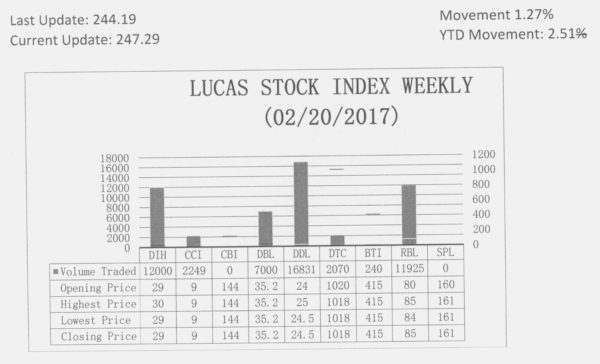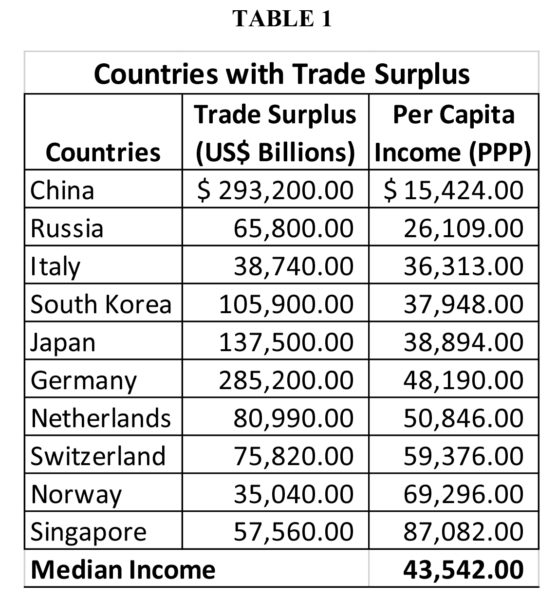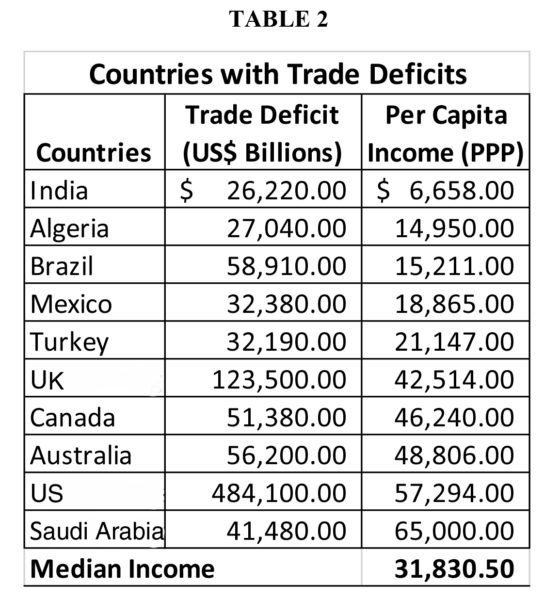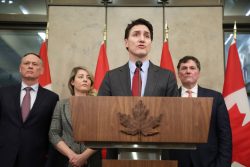Global trade
The Guyana economy grew an average of 4.5 per cent over the period 2010 to 2013. It started to lose steam in 2014, but continued to grow, albeit at a slower pace than before. Without a detailed study of the cause of the slower growth, people will pick and choose their own reasons for the slow pace of Guyana’s global trade. It might be caused by high levels of income inequality or some other factor, but one thing that is known is that Guyana depends heavily on international trade to keep its economy buoyant. More than 50 per cent of Guyana’s gross domestic product (GDP) comes from international trade and 25 per cent of it comes from trade with other Caricom countries. This article will consider the impact of international trade and its linkage to the international monetary system.
More than 50 per cent of Guyana’s gross domestic product (GDP) comes from international trade and 25 per cent of it comes from trade with other Caricom countries. This article will consider the impact of international trade and its linkage to the international monetary system.
Colonial authorities
One of the things that helps to boost growth is international trade. Trade has been an integral part of Guyana’s colonial and post-colonial experience. During the period of the 16th to the 18th centuries when mercantilism was dominant, international trade was used by the colonial authorities to acquire wealth and power. When the Dutch first settled here in the 17th century, it was trade that became their first activity. The thinking was simple. Countries that ran a trade surplus had more wealth to accumulate than those who had a trade deficit. The acquired wealth was used in part to provide security for the country. Since the state had the principal responsibility of providing security for the country, it played a central role in directing trade activities and trade relations. Naturally, every country wanted to be the one with the trade surplus with the result that every country found ways to restrict imports and boost exports. As a result, high tariff barriers and restrictions on imports emerged. This practice of limiting trade also was used to boost employment and output of the country. With that experience, mercantilism grew to become synonymous with state power and state intervention in the economic affairs of a country.
One could see that under mercantilism, one nation only made progress if another one suffered. Many of the wars fought in the Caribbean region during colonial times were linked to the zero-sum philosophy of mercantilism. Ascendancy to the top of the power structure had to be maintained through growth in trade and the exercise of military power.
Individual investor
With the emergence of the work of Adam Smith and other economic thinkers like David Ricardo, James Mill and his son John Stuart Mill, another way of looking at trade came forth and began to chip away at the dominance of mercantilist thinking. The liberal view became stronger over time and the view that there should be no restrictions to trade became much stronger. Trade needed to be free and the trade balance, positive or negative, did not matter. Advocates of trade liberalization felt that it was the individual investor and not the state that should benefit from trade. In their view, the entire society gained because comparative advantage made imports cheaper and the choice of goods available to consumers increased. A further viewpoint of the liberal thinkers was that the product that entered trade did not matter. Mercantilists felt that the export of agricultural products and raw materials yielded far less returns than manufactured goods. Their view was that countries should export more manufactured goods than agricultural goods.
The international community has had years of both liberal and mercantilist trade philosophy and a few things seem to endure. Data provided by the World Trade Organization (WTO) reveal that manufactured goods make up two-thirds of the merchandise trade and bring in the greatest revenues. The countries that are running trade surpluses also appear to have the highest median per capita income when measured in purchasing power parity.
Export trade
In Table 1, with perhaps the exception of Norway and Russia which export primarily raw materials, all the other countries thrive on exporting substantial amounts of manufactured goods. It would appear therefore that the view of the mercantilists about the importance of manufactured goods in the export product mix remains valid today. China is among the top exporters of clothing, office furniture, chemicals, automotive parts and telecommunications equipment. Singapore, for example, has exports with comparatively high valued-added elements and its export trade is made up of nearly 60 per cent of those items.
In support of liberalist economics, more countries with trade deficits seem to grow faster than those with a trade surplus. There were about eight of the 10 countries with a growth rate higher than two per cent among the deficit countries and only three among the 10 surplus countries. Guyana itself ran a trade deficit of $116 billion from 2010 and 2013. The most recent budget put forward by the Government of Guyana drew attention to the decline in exports in several areas. These include rice, sugar and timber. These led to a lessening and not an increase in the trade deficit. The implication there is that many items needed for economic activity are not being imported in the same quantities as before. It would appear that trade deficits do not necessarily hinder growth because the Guyana economy was still able to grow, albeit at a slower pace.
Financial flows
Under the liberalist view of international trade, countries could not persistently run a deficit unless they had a way to pay for their imports. Sometimes countries get enough money to pay for goods and services through financial flows that come from foreign investment. However, a fundamental aspect of liberalized trade is the availability of international liquidity. Trade liberalization goes hand-in-hand with an international monetary system since no one country could carry the burden of the rest of the world.
If a country is not going to borrow from the international monetary system, then it has to be able to attract huge amounts of foreign investment whether direct or portfolio, or have the ability to print its own money in the belief that its currency will be accepted by others. In a case like that the issue that arises is one of inflation which itself could undermine the export prospects of a country.
Different currencies
A fundamental aspect of the international monetary system is that of the exchange rate. Countries have different currencies which have to be valued against each other. That valuation is critical to settling the right amounts in payment. The responsibility for overseeing that valuation system rests with the IMF. It is only with a solid international monetary system that liberalist thinking and practice in international trade could survive.

The Lucas Stock Index (LSI) rose 1.27 percent during the third period of trading in February 2017. The stocks of seven companies were traded with 52,315 shares changing hands. There were two Climbers and one Tumbler. The stocks of Demerara Distillers Limited (DDL) rose 2.08 percent on the sale of 16,831 shares and the stocks of Republic Bank Limited (RBL) rose 6.25 percent on the sale of 11,925 shares. The stocks of Demerara Tobacco Company fell 0.20 percent on the sale of 2,070 shares. In the meanwhile, the stocks of Banks DIH (DIH), Caribbean Container Inc. (CCI), Demerara Bank Limited (DBL) and Guyana Bank for Trade and Industry (BTI) remained unchanged on the sale of 12,000; 2,249; 7,000 and 240 shares respectively.











